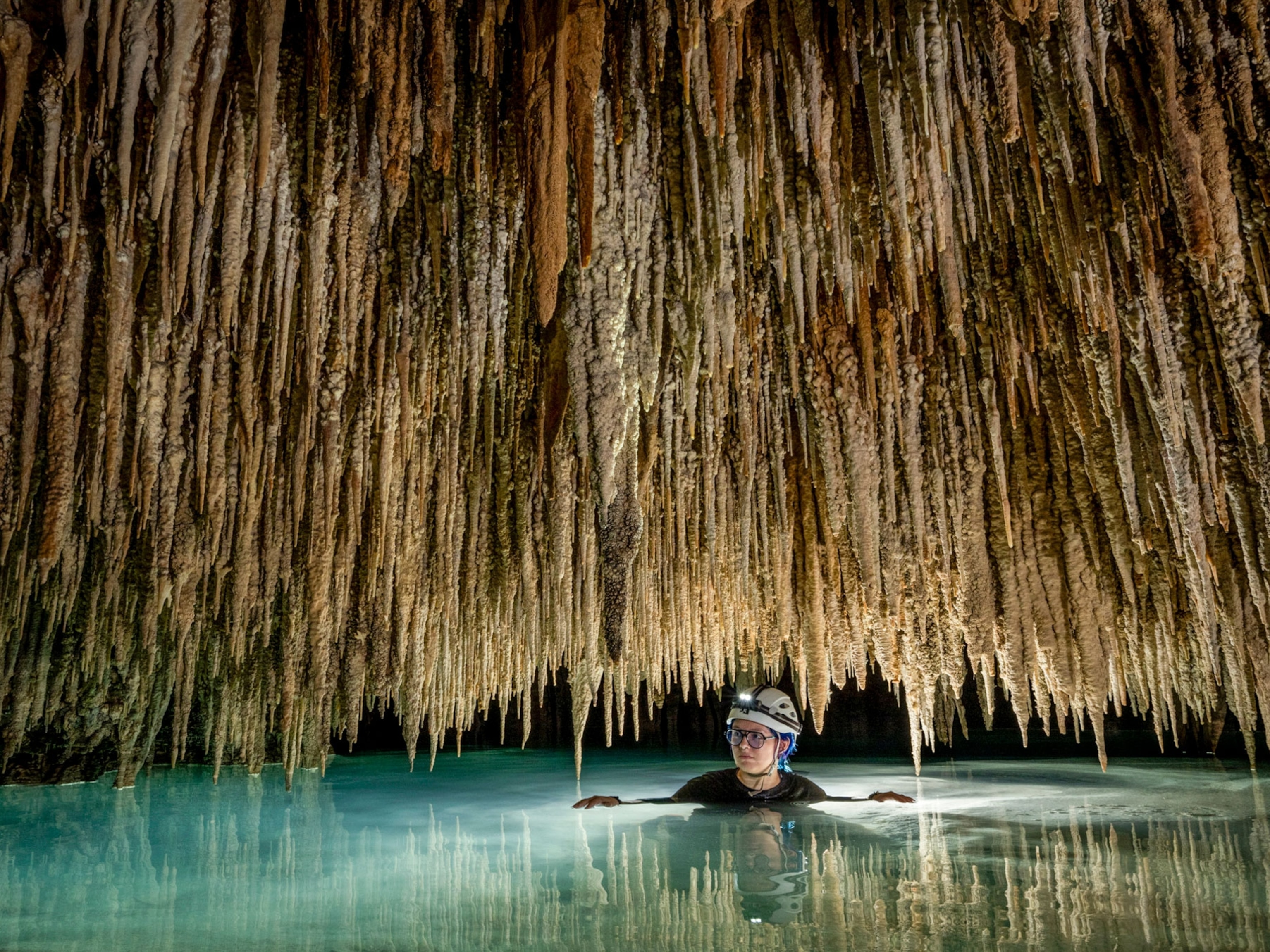Watch Divers Find Sloth Fossils in Underwater Cave
The impeccably preserved skeletons could shed further light on the extinction that killed off woolly mammoths.
On an unassuming farm in western Cuba, an expedition funded by National Geographic has uncovered a spectacularly rare find: three skeletons of now extinct sloths, undisturbed for thousands of years in a water-filled cave.
“It’s hard to get your mind around the fact that there’s this world below your feet,” says expedition leader Matthew Peros of Bishop’s University in Quebec, Canada.
The well-preserved remains—first found by adventurous divers exploring the cave for fun—could help shed further light on the Pleistocene megafaunal extinction, which wiped out most of the large-bodied mammals that lived in the Americas.
Across most of mainland North America, animals like giant ground sloths and mammoths went extinct about 10,000 years ago. But on Caribbean islands including Cuba, some sloths—including the species recovered from the cave—hung on until about 4,500 years ago, a geological blink of an eye from the present. (Read more about the Ice Age ground sloths you just missed.)
Current evidence indicates that humans’ arrival to Cuba may have played a role in the sloths’ extinction, whether from hunting or from subtler pressures. However, it’s unclear how much other factors, such as climate variability, played a role.
“Just 10,000 years ago, we had three to four times the number of species of large-bodied mammals—and they’ve all disappeared,” says Ross MacPhee of the American Museum of Natural History, a Caribbean sloth expert who wasn’t involved with the expedition.
“What’s going on? Why can we have a world like our own, yet from it has been subtracted all these megafaunal mammals?”
The cave’s remains belonged to two extinct sloth species found only in Cuba. Two of the three skeletons belonged to Neocnus gliriformis, a smallish sloth “about the size of a small dog,” says Peros, that could have taken to the trees. The third, however, belonged to Megalocnus rodens, a lumbering creature that could get to the size of a small grizzly bear.
It’s not clear how exactly the sloths died. Perhaps they were looking for water to drink out of freshwater pools in the back of the inland cave, or maybe floodwaters washed the sloths’ bodies into the cave during a major storm.
Either way, global sea levels rose at the end of the last ice age, causing Cuba’s water table to rise, as well—slowly filling up the cave with fresh groundwater and preserving the skeletons for millennia in a watery time capsule.
MacPhee notes that the preservation is excellent, especially considering that the skeletons are largely intact. “The specimens that are quasi-complete, like the ones Matt is finding, are always to the good,” he says. “Very often, all that’s left are disjointed bits and pieces.”
What’s more, the cave not only contains fossils, but also speleothems, slowly accreted rocks that chemically encode past climates. Since speleothems form only in the open air, Peros says that the fossils and speleothems together could allow researchers to reconstruct when the cave filled with water—giving researchers a detailed view of past sea level rise.
But MacPhee and Peros both point out that underwater preservation has its downsides. While the water largely prevented the skeletons from being disturbed, it degraded the bones’ collagen, the structural protein that scientists analyze for radiocarbon dating. Thus, Peros’ team hasn’t been able to determine the skeletons’ exact ages, though they’re probably at least 4,000 to 5,000 years old.
Perhaps most amazing for Peros is that the research went as swimmingly as it did. Exploring the cave required skilled photographers, divers, and a deep partnership between U.S. and Cuban researchers, a bureaucratically fraught task made possible by Joao Gabriel Martínez López, an expedition member and a curator at the Natural History Museum of Cuba.
“I can’t tell you how lucky I am to be working with these people,” says Peros. “At this point, I’ve seen lots of neat geological and paleontological things—but it’s working with such highly skilled people that makes me go, ‘wow.’”
Follow Michael Greshko on Twitter.




